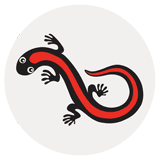Not All Who Wander are Lost
June 22, 2014 | By Ariane Batic
When most people think of marine creatures, animals such as whales, seastars, salmon and anemones come to mind. Their lives are widely investigated, but their survival inherently depends on a group of tiny organisms called plankton.
The plankton (from greek planktos, meaning wanderer) are marine organisms that live in the water column and cannot swim against the current. Though most are microscopic, some plankton like the Lion’s mane jellyfish can grow to be over 30 meters long. Plankton are organized into 2 groups, the phytoplankton (from greek phyto-, meaning plant) and the zooplankton (from greek zoo-, meaning animal).
Phytoplankton live near the ocean surface and require sunlight to photosynthesize and create their own energy. In fact, phytoplankton are responsible for more than half of the world’s production of oxygen! They are also at the bottom of the oceanic food chain, providing nutrients for tiny animals such as zooplankton, to the giants of the ocean like whales. The most common phytoplankton are diatoms and dinoflagellates.
Diatoms are single-celled organisms made of a little glass box with a little glass lid, each half called a frustrule. To compensate for their heavy glass structure, diatoms are full of oils which allow them to float at the surface and gather sunlight. When diatoms get smashed ashore by waves, their frustules break apart and oil gets released to contribute to the formation of seafoam!
Dinoflagellates are equipped with two little tails called flagella, to help them move. If these organisms get disturbed they create light, called bioluminesence, which scientists believe to be a sort of burglar alarm against predators. They are also responsible for harmful algal blooms, also known as red tides. Dinoflagellates get ingested by filter-feeding bivalves – molluscs such as oysters, clams and mussels – and toxins from some dinoflagellates accumulate in the tissues of these bivalves. When mammals, including humans, consume bivalves during red tide season, the toxins can have negative impacts on the body. In small concentrations, tingling of the lips occurs, but in high doses the toxin can cause respiratory failure. If harvesting shellfish it’s always important to check a government official website to get the status of red tide severity in your area.
Zooplankton must ingest their nutrients, which they acquire from phytoplankton or smaller zooplankton. Some zooplankton, such as copepods and jellies, are planktonic for their entire life, but most zooplankton are planktonic for only a part of their lifecycle. About 80% of marine invertebrates, including crabs, sea stars, barnacles, marine worms and many more, start their life off as plankton. When these invertebrates reproduce, a sperm meets an egg and after fertilzation occurs, the zygote becomes a plankton that eventually settles on a substrate. This early life-history strategy is advantageous because it allows dispersal of offspring as well as reduced competition with parents for food and space.
Though you may not always see them – plankton are out there, and some will become a feast for tiny fish or giant whales. So next time you are in the ocean, grab a small handful of sea water and I can almost guarantee you will meet some new sea creatures.
If you want to observe plankton from up close and would like to learn more, stop by the Raincoast Education Society office in the Tofino Botanical Gardens. Pre-collected plankton will be ready for microscope observation every Tuesday from 1pm to 2pm. See you then!
Ariane Batic is a Marine Biologist with the Raincoast Education Society. Ever wonder what you’re seeing along our shorelines? Ariane can probably help: ariane@raincoasteducation.org



